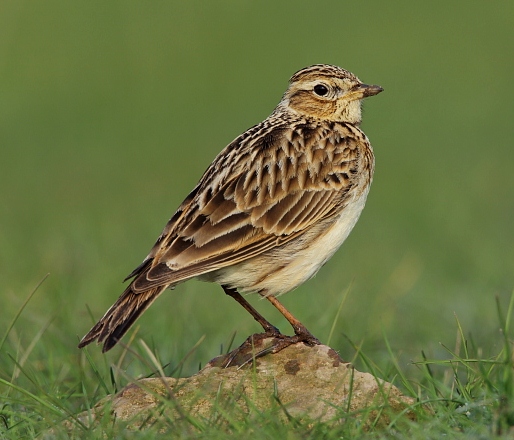Alauda arvensis
 |
| Photo by Lewis Thomson (LT Images) |
Common name:
Taxonomy:
Order Passeriformes
Family Alaudidae
Range:
The skylark breeds across Europe and the temperate zone of Asia as far east as Japan and the Kamchatka peninsula of Russia. The western populations are resident, but the eastern populations migrate south to winter in southern China. The species has been introduced to Australia, Canada, Hawaii, and New Zealand.
Size:
They are 16-19 cm long and have a wingspan of 30-36 cm. They weigh up to 55 g.
Habitat:
Skylarks utilise a wide range of open habitats including saltmarshes and coastal grazing land, arable farmland and rough grazing in the uplands. They are present from sea level up to an altitude of 1.000 m.
Diet:
These birds are omnivores, eating seeds and insects which they take from the ground. They are known to eat weed seeds and waste grain, as well as beetles, caterpillars, spiders, millipedes, earthworms, and slugs.
Breeding:
Skylarks breed in April-August. Females build the nest with little help from males, a shallow depression in the ground lined with stems and leaves, often found near short vegetation. There the female lays 3-5 pale brownish-grey eggs, which she incubates alone for 11-14 days. The chicks are fed by both parents and fledge 8-11 days after hatching, but only become fully independent 2-3 weeks later. Each pair may produce 2-3 broods per year.
Conservation:
IUCN status – LC (Least Concern)
This species has an extremely large breeding range and a huge global population estimated at 250-1000 million individuals. The population is estimated to be in decline following marked regional declines in recent decades linked to agricultural intensification.







